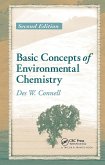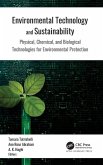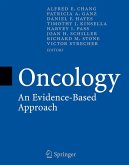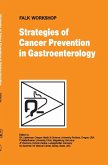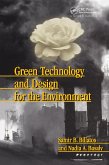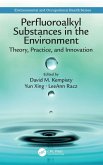Cancer as an Environmental Disease
Herausgegeben:Nicolopoulou-Stamati, Polyxeni; Hens, Luc; Howard, Vyvyan C.
Cancer as an Environmental Disease
Herausgegeben:Nicolopoulou-Stamati, Polyxeni; Hens, Luc; Howard, Vyvyan C.
- Gebundenes Buch
- Merkliste
- Auf die Merkliste
- Bewerten Bewerten
- Teilen
- Produkt teilen
- Produkterinnerung
- Produkterinnerung
These pages contain a number of chapters from specialists in the field who consider, from a number of different perspectives, the currently available evidence that supports the environmental cancer aetiology hypothesis. This constitutes the first part of the book. In the second part of the book, an examination of the policy implications of accepting that the cancer epidemic may essentially be preventable is presented. This will pose some difficult problems for politicians and decision-makers, who will have to consider adopting policies that may damage the economy in the short term in order to…mehr
![Basic Concepts of Environmental Chemistry Basic Concepts of Environmental Chemistry]() Des W ConnellBasic Concepts of Environmental Chemistry157,99 €
Des W ConnellBasic Concepts of Environmental Chemistry157,99 €![Environmental Technology and Sustainability Environmental Technology and Sustainability]() Environmental Technology and Sustainability203,99 €
Environmental Technology and Sustainability203,99 €![Oncology Oncology]() Alfred E. Chang / Patricia A. Ganz / Daniel F. Hayes / Timothy Kinsella / Harvey I. Pass / Joan H. Schiller / Richard M. Stone / Victor Strecher (eds.)Oncology247,99 €
Alfred E. Chang / Patricia A. Ganz / Daniel F. Hayes / Timothy Kinsella / Harvey I. Pass / Joan H. Schiller / Richard M. Stone / Victor Strecher (eds.)Oncology247,99 €![Strategies of Cancer Prevention in Gastroenterology Strategies of Cancer Prevention in Gastroenterology]() Strategies of Cancer Prevention in Gastroenterology147,99 €
Strategies of Cancer Prevention in Gastroenterology147,99 €![Principles of Environmental Thermodynamics and Kinetics Principles of Environmental Thermodynamics and Kinetics]() Kalliat T ValsarajPrinciples of Environmental Thermodynamics and Kinetics201,99 €
Kalliat T ValsarajPrinciples of Environmental Thermodynamics and Kinetics201,99 €![Green Technology and Design for the Environment Green Technology and Design for the Environment]() Samir BillatosGreen Technology and Design for the Environment157,99 €
Samir BillatosGreen Technology and Design for the Environment157,99 €![Perfluoroalkyl Substances in the Environment Perfluoroalkyl Substances in the Environment]() Perfluoroalkyl Substances in the Environment229,99 €
Perfluoroalkyl Substances in the Environment229,99 €-
-
-
Hinweis: Dieser Artikel kann nur an eine deutsche Lieferadresse ausgeliefert werden.
- Produktdetails
- Verlag: Springer / Springer Netherlands
- Artikelnr. des Verlages: 978-1-4020-2019-3
- 2004 edition
- Seitenzahl: 215
- Erscheinungstermin: 31. März 2004
- Englisch
- Abmessung: 245mm x 165mm x 18mm
- Gewicht: 522g
- ISBN-13: 9781402020193
- ISBN-10: 1402020198
- Artikelnr.: 13985510
- Herstellerkennzeichnung
- Produktsicherheitsverantwortliche/r
- Europaallee 1
- 36244 Bad Hersfeld
- gpsr@libri.de
- Verlag: Springer / Springer Netherlands
- Artikelnr. des Verlages: 978-1-4020-2019-3
- 2004 edition
- Seitenzahl: 215
- Erscheinungstermin: 31. März 2004
- Englisch
- Abmessung: 245mm x 165mm x 18mm
- Gewicht: 522g
- ISBN-13: 9781402020193
- ISBN-10: 1402020198
- Artikelnr.: 13985510
- Herstellerkennzeichnung
- Produktsicherheitsverantwortliche/r
- Europaallee 1
- 36244 Bad Hersfeld
- gpsr@libri.de


